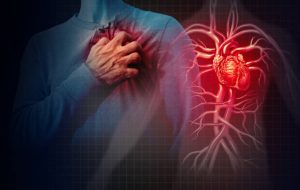Cardiac Arrest Symptoms

Writer: Prof. Dr. Yavuz Besogul
Categories:
It is a condition in which the heart suddenly and unexpectedly loses its normal rhythm and function. In this case, it cannot pump blood regularly and carry oxygen to the body. cardiac arrest It is a medical emergency and can be fatal if left untreated.
The most common cause is crisis. It occurs as a result of sudden blockage of a coronary artery that carries blood. As a result, the muscle becomes damaged and loses its normal rhythm. However, it can also be caused by other reasons. Conditions such as severe electric shock, arrhythmias, drug toxicity or traumatic injuries.
If it stops, immediate medical attention is required. First, if diagnosed, CPR should be performed. It is a procedure that involves external pressure and artificial respiration to get the heart working again. Initiating it immediately is vital and can alleviate its effects.
Additionally, a defibrillator, a device that can deliver an electric shock to a person, may be used. The defibrillator provides electrical energy to restore the heart's normal rhythm. Therefore, it is important to have a defibrillator in a public area until the ambulance arrives.
cardiac arrest In this case, time is of the essence. Emergency help should be called immediately and CPR administered whenever possible.

What to Do Emergency in Case of Cardiac Arrest
Call the emergency number (112) immediately and report the situation. Explain the situation to the operator in detail.
If you are trained in CPR, start immediately. First, check the person's breathing. If breathing is absent or abnormal, begin cardiac massage and artificial respiration. It involves a combination of heart massage and breathing to keep blood circulating throughout the body.
Lay the person on his back on a flat surface. Place the soles of your hands in the middle of the sternum and keep your arms straight. Apply rhythmic pressure quickly and frequently using your body weight. Press the breastbone by 5-6 cm with each press. Do 30 compressions.
After the massage, give two breaths of artificial respiration. Pinch the person's nostrils and breathe into the person's mouth and observe the rise and fall of the person's chest. Then move on to the next compression.
Other Methods Used
If you are in a public place and a defibrillator is available, ask someone to bring it. Follow the defibrillator's instructions. The defibrillator delivers an electric shock to restore the heart's normal rhythm. Use the device by following the instructions step by step.
Continue CPR and follow instructions until emergency medical personnel arrive at the scene. The teams will evaluate the cause of the condition and apply the necessary treatments.
Remember, it is an emergency and requires quick action. Being trained in CPR is an important emergency skill and can save many lives. cardiac arrest Being aware of the issue and calling the emergency number are important steps to providing quick and effective assistance.


